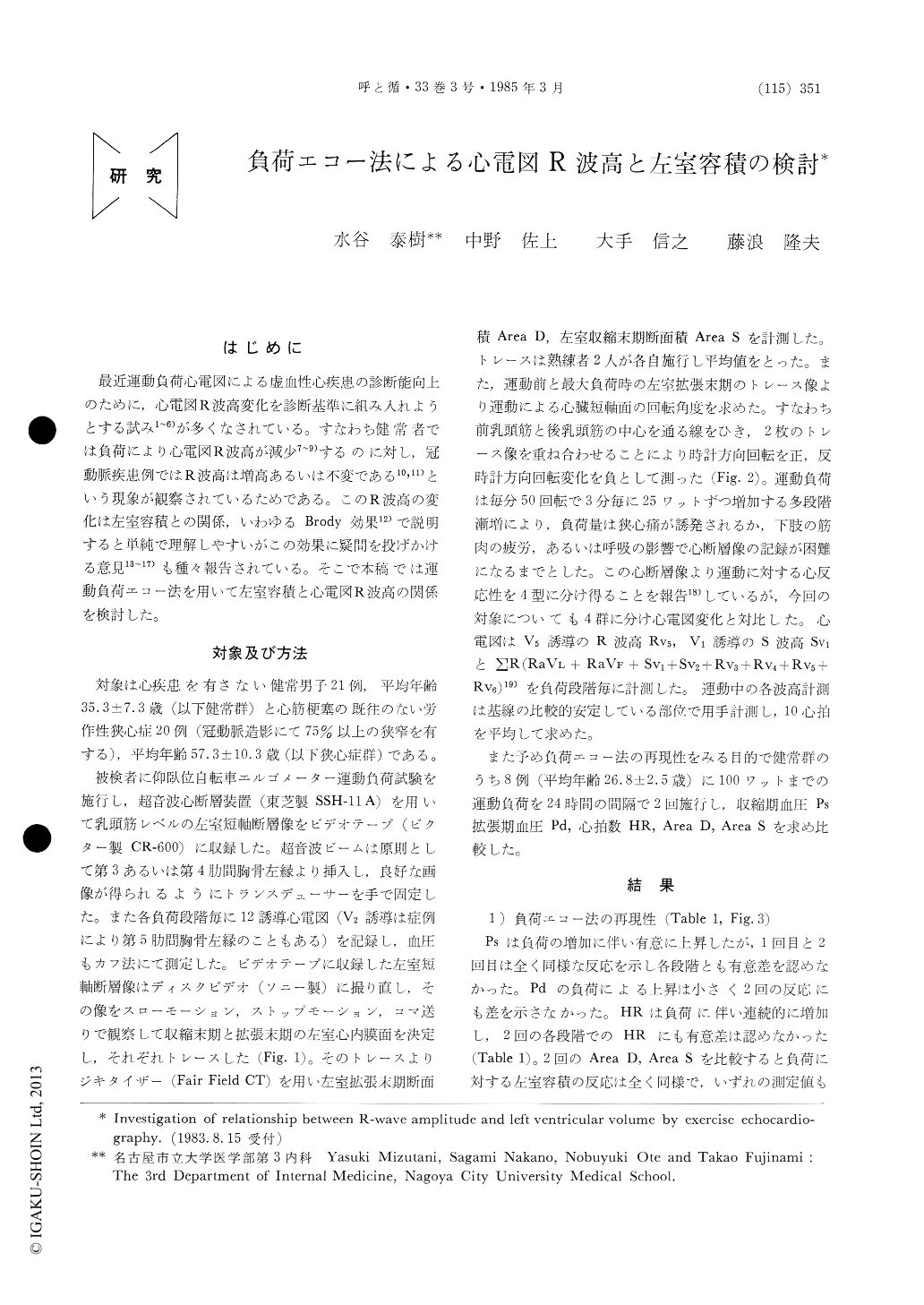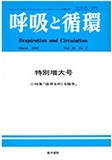Japanese
English
- 有料閲覧
- Abstract 文献概要
- 1ページ目 Look Inside
はじめに
最近運動負荷心電図による虚血性心疾患の診断能向上のために,心電図R波高変化を診断基準に組み入れようとする試み1〜6)が多くなされている。すなわち健常者では負荷により心電図R波高が減少7〜9)するのに対し,冠動脈疾患例ではR波高は増高あるいは不変である10,11)という現象が観察されているためである。このR波高の変化は左室容積との関係,いわゆるBrody効果12)で説明すると単純で理解しやすいがこの効果に疑問を投げかける意見13〜17)も種々報告されている。そこで本稿では運動負荷エコー法を用いて左室容積と心電図R波高の関係を検討した。
Relationship between QRS changes in ECG and left ventricular volume during exercise by multistage exercise by echocardiography were studied on 21 healthy subjects and 20 patients with angina pectoris. Cross-sectional echocardiogram of short axis view at the papillary muscle level and 12 leads ECG were recorded during exercise increasing 25 watts every 3 minutes untill patients' symptom limited end point or 125 watt load. Amplitude of SV1, RV5, and ΣR (RaVL+RaVF +SV1+SV2+RV3 RV4 + RV5 + RV6) were estimated in respect to the left ventricular section-al area changes. In the healthy, reduction in height of RV5 and incement of SV1 were observed in company with clockwise rotation of the heart axis. In 6 patients, an increase of RV5, SV1, and ΣR were observed in proportion to enlargement of Area D and Area S during increase exercise loads. But in 13 patients whose Area D and Area S had little change with exercise, about half of the cases showed an increase and he other demonstrated reduction in the amplitude of RV5, SV1 and ΣR.
It may be concluded that a clockwise rotation of the heart is the major cause of diminution of R wave amplitude during exrcise in the healthy men, and that changes in the amplitude of RV5, SV1 and ΣR are not invariably representative alteration of the left ventricular volume during exercise in the patients.

Copyright © 1985, Igaku-Shoin Ltd. All rights reserved.


